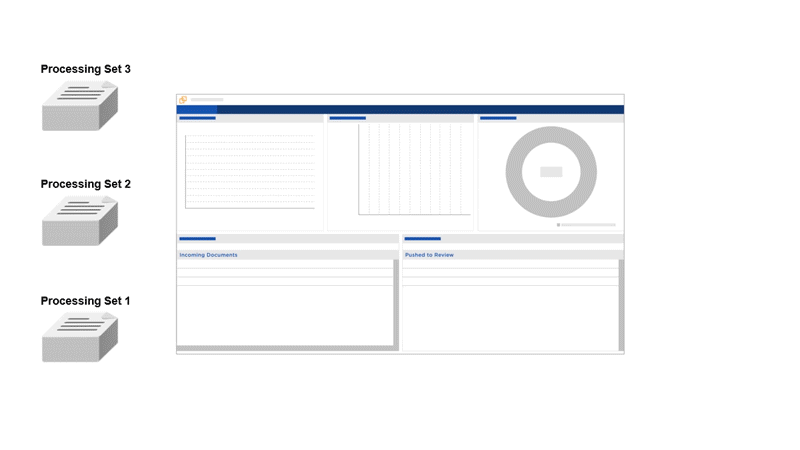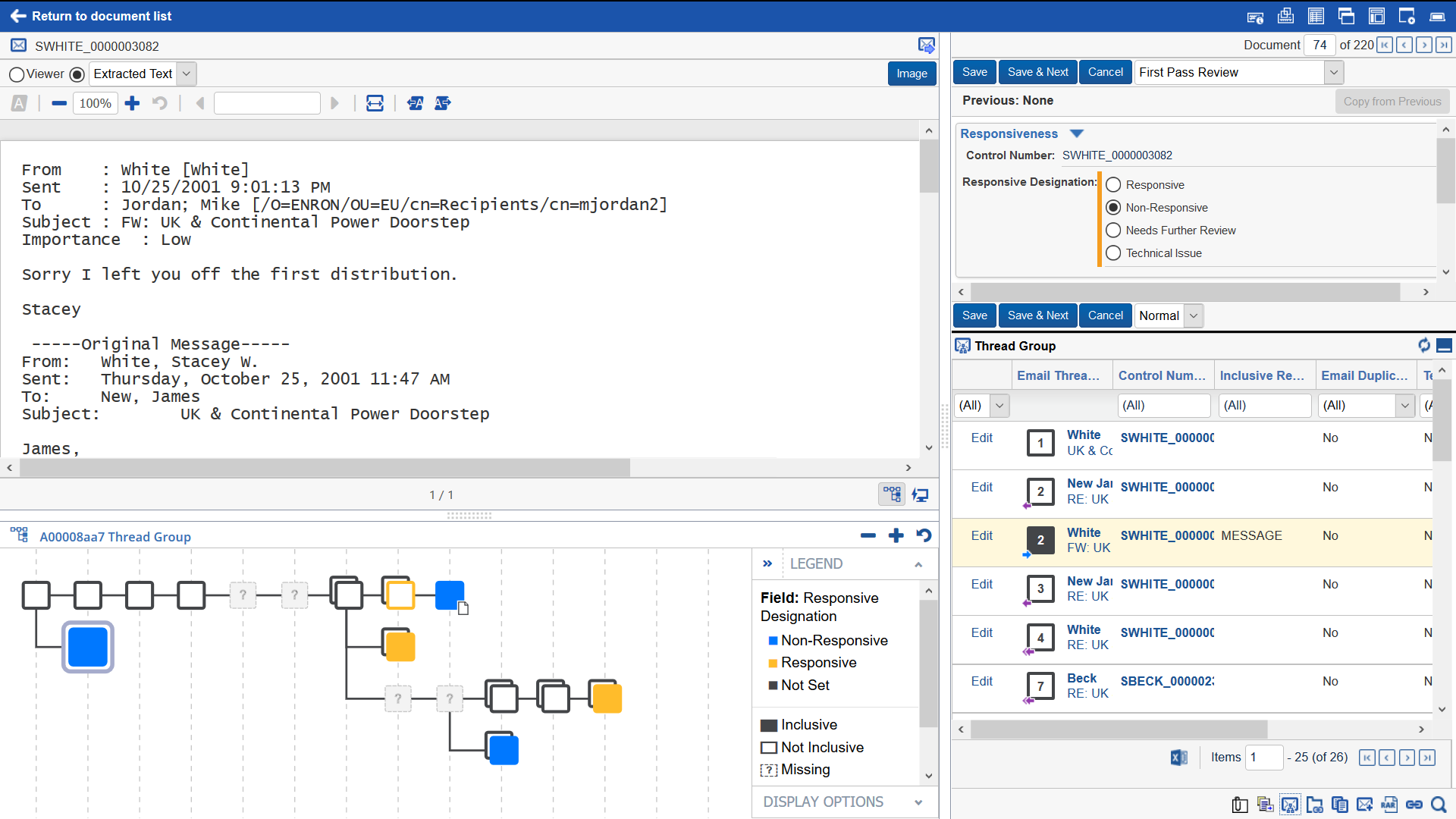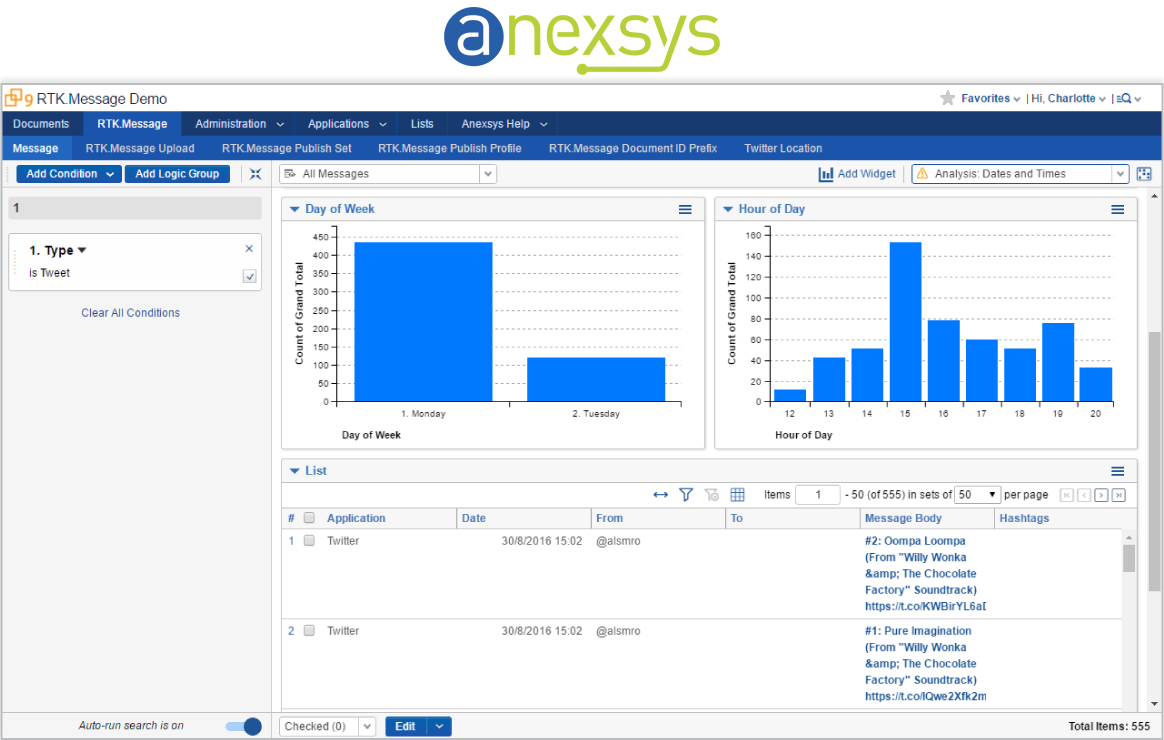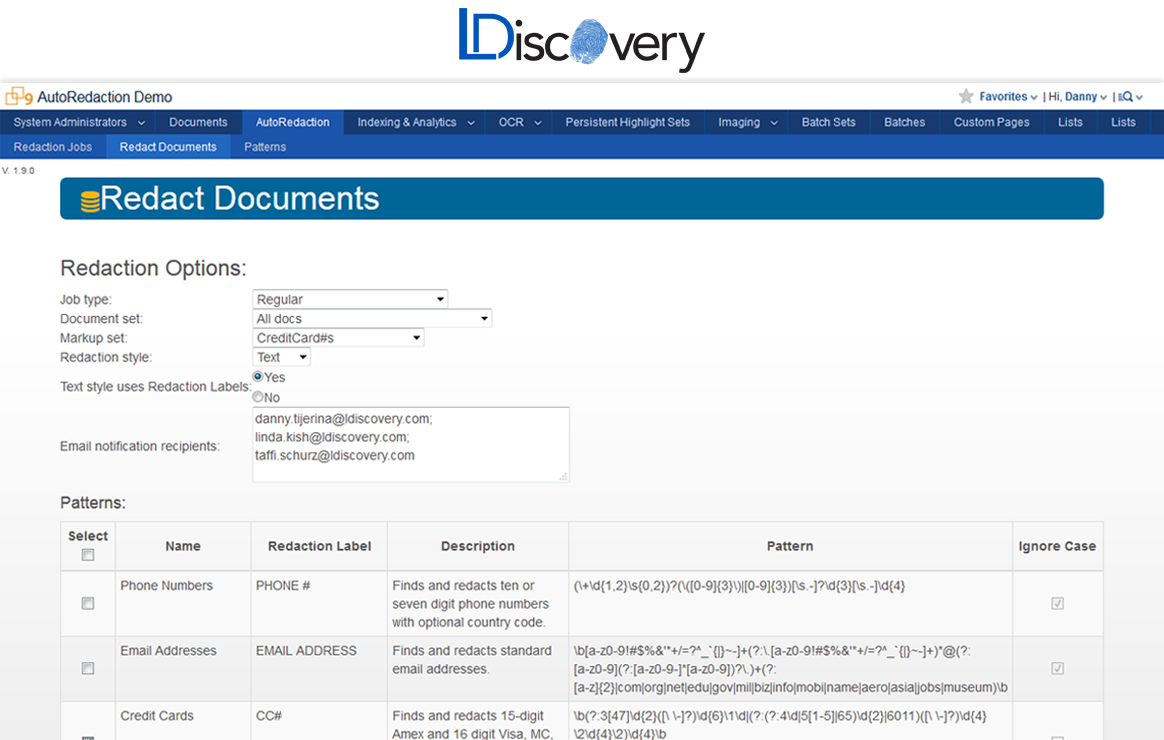If you’ve ever heard him talk about kCura before, you’ve probably heard that our vision is to become “the e-discovery company.” But we’re done with that. The vision of our company should be about our customers, the people using our software every single day, whose jobs we want to make better, faster, and easier. Our vision shouldn’t be about us.
So we changed it. We want to simplify and accelerate how the world conducts e-discovery by bringing the entire process and community together in one open, flexible, and connected platform. That’s our vision. And today we’re excited to share a few ways Andrew announced we’re going to fulfill that vision. Check out the full recording of the keynote and read through the highlights right here.
1. ECA and Investigation
When customers use an early case assessment tool, they generally use it under the context of one of two core use cases: culling or investigations. So, when we created Relativity ECA and Investigation, we knew we needed to create something that could quickly and easily ingest large amounts of data and make it immediately available for searching and review. We needed to give customers fast and easy searching and visualizations. And the software and workflow needed to be simple, because the end user is not a hard-core technologist.

ECA isn’t new. It’s been done for years. So, why is what we’re doing different? A few reasons:
- Slick visualizations and simple workflows. Users can interactively analyze, and slice and dice through data on any dimension. Even the most novice user can be productive.
- Fully embedded analytics. You get the full capabilities of Relativity Analytics, bringing the power of machine learning earlier in the process.
- Workspace-to-workspace transfer. You can support a single workflow with multiple workspaces. That means you can have a massive repository workspace with pre-culled data, then seamlessly push data to smaller workspaces for review. Users only live in the universe of data that is relevant to them.
- Reusable data. You can take information from the individual review workspaces and transfer them back to the primary repository, facilitating work product reuse. There’s no reviewing duplicate work, which will save time and money.
- One platform. It’s all in Relativity. Not only have we streamlined the process by bringing it all together under one platform, reducing manual data movement between stages, but your data is instantly ready for review and production.
2. Deeper Email Analysis
Email threading can and should be used on every case, no matter the size. Customers don’t usually run into objections when they decide to use threading. The results speak for themselves.
Still, threading isn’t always transparent. There are complicated threads that involve a lot of people and spawn off in different directions, and it can be tricky to understand the conversation or quickly identify missing pieces, even if the inclusive emails are evident. Also, not every person looking at these emails is going to be a forensic examiner or even a user who’s in the software doing this stuff day in and day out.

We wanted to make the process of reviewing these complicated conversations easy. So, in RelativityOne and Relativity 9.5 early next year, you’ll be able to visualize your threads to easily see the full story of an email. It will be obvious when a conversation branches off in different directions and which emails are inclusive. You’ll be able to quickly navigate across a conversation to find missing emails, make fast coding decisions, and even pinpoint discrepancies across decisions. Like cluster visualization changed the way users analyze clusters, these insights will drastically improve the way you investigate emails.
Attend a Relativity 9.5 webinar to see email thread visualization in action >>
3. RelativityOne
We announced our own SaaS offering, RelativityOne, earlier this year, and it’s currently in a soft launch period with cases being worked on. When it becomes generally available, customers will have access to Relativity’s complete stack of flexible and extensible tools, like the ability to customize the software with unique applications, advanced analytics and visualizations to uncover the facts of a matter, and flexible workflows to act on what you find.
Additionally, because we purpose-built RelativityOne for Microsoft Azure, customers will get the speed of innovation, security, redundancy, and scalability that Azure offers. Along with that, we’ll keep innovating at an accelerated pace and will deliver features faster than ever. And you’ll have access to them the moment they’re ready.
This morning, Andrew also discussed RelativityOne’s unique architecture, which will allow each customer instance of RelativityOne to effectively be its own private network, so each individual customer can write and execute their own scripts, install their own applications, and access their SQL database directly. If you need it, you can also have more granular control of upgrades, choosing when they happen within a window of a few weeks by just telling the management service when to do it.
4. Microsoft Office 365® and EnCase Integrations
Microsoft has 70 million Office 365 commercial monthly active users. It’s one of the most common ways for businesses to communicate, and we believe Office 365 information will soon become a major source of e-discovery data. Giving users a streamlined and easy-to-use Office 365 integration will simplify and accelerate the way you work. With the click of a few buttons, you’re up and running with your review and analysis. All of the unstructured data from Office 365 is ready to go—no additional tools required.
Microsoft isn’t the only integration we’ve been working on, though. We’ve also been working closely with Guidance—the makers of the most pervasive digital forensics tools—to develop a refreshed, seamless integration between Relativity and EnCase. We know how many people in the industry rely on both these tools, but it’s not easy to move data between them. This new integration and partnership will make it faster and easier to connect nearly 150,000 Relativity users to Guidance’s 33 million endpoints.
5. A Hybrid Solution
When we introduced our plans for RelativityOne, one of the most common questions we got was, “Will you continue to support the on-premises product?” And the answer was always yes.
The reality is no single installation or cloud will solve all of your e-discovery challenges—which is why our strategy has always been hybrid. For us, part of delivering RelativityOne successfully means connecting it seamlessly to Relativity on-premises. With a hybrid SaaS and on-premises product, customers will have the advantages of:
- Consistency. Users across the board will get the same user interface with the same features and workflows for better data intelligence, whether they’re working in Relativity or RelativityOne.
- Data mobility. Spinning up new workspaces in the cloud and moving cases there will be easy with new utilities for faster data transfers and workspace archival and migration.
- Universal users. An important piece of delivering a hybrid solution is having universal users, where a single user can access any Relativity or RelativityOne instance associated with their subscription.
- A unified experience. Your on-premises installation and RelativityOne will live together in one interface, with one login and one list of workspaces to manage. Legal teams will have quick and easy access to all of their matters—whether they’re on-premises, cloud-based, or across geographies—in one place.
Whether you’re one of our partners who sees international expansion as your next big growth opportunity, a law firm servicing the needs of the Global 2000, or a multi-national dealing with regulatory requests across the globe, a hybrid strategy will allow you to have a consistent and reliable approach to how you handle e-discovery, which includes how you deploy your applications, integrations, and customizations.
You’ll be able to offload workspaces to the cloud and seamlessly extend your on-premises data centers—freeing up time and energy to spend on delivering higher value services to your customers. You’ll be able to manage a more conservative upgrade schedule with on-premises installations, while always having your hands on the latest and greatest technology in RelativityOne. And you’ll always be close to your data, which can be an advantage in speed and security.
Finally, the hybrid approach gives you the ultimate control: a choice of where your data lives. That could mean a private cloud purpose-built for the regulations of a certain industry, or it could mean taking advantage of the security inherent in Azure and RelativityOne.
6. An Open Platform
Relativity has always been an open and extensible platform. We want our users to customize it and extend its capabilities to meet any workflow. We want them to join forces with our developer partners, who build great applications and customizations to do even more with the software.
We have products for the entire e-discovery process, but our technology doesn’t always fill all of the gaps. For example, Anexsys created RTK.Message to help customers visualize and review social media data. LDiscovery built a tool that can automatically find and redact sensitive information. And that’s just the beginning. If you haven’t seen them already, take a look at the 21 custom applications that were submitted to the Relativity Innovation Awards this year.

We want our customers to be able to use those tools earnestly, with no headaches. That’s why, just as it always has, our ecosystem will continue to connect customers and developers, helping them get together, build on top of the platform—whether that’s Relativity or RelativityOne—and simplify and accelerate e-discovery.

7. A Connected Community
Of course, one of the most important parts of a simpler and faster e-discovery experience is the community enabling it. With 12,179 unique organizations using Relativity, our user base is a large, diverse community—from our more than 125 global partners handling some of the biggest, nastiest cases to our 70 academic partners helping future e-discovery practitioners get their feet wet.
A ton is possible if there’s an ecosystem where corporations, law firms, government institutions, service providers, and software developers can come together. We believe we can help foster this by streamlining data transfers between organizations, connecting disparate systems, and delivering an open platform to a market eager for innovation.
The work this industry does is important. And no matter your role, we want to make it easy for you to do your job more efficiently. That means giving you the tools, and breaking down the barriers, to simplify and accelerate how you conduct e-discovery, together.










